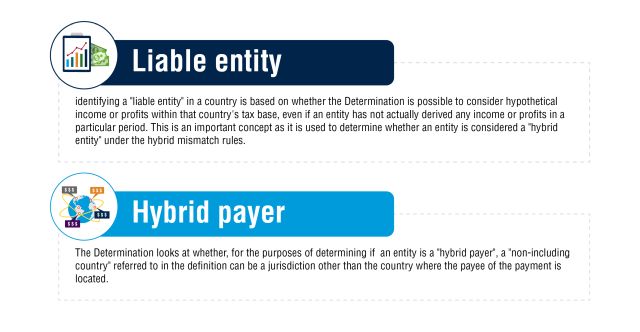The Australian Taxation Office (ATO) issued Taxation Determination TD 2024/1 on 13 March 2024, which provides guidance on how certain concepts in the hybrid mismatch rules under Division 832 of the Income Tax Assessment Act 1997 should be interpreted. It is worth noting that two of the three examples consider issues in the context of US-headquartered groups. The draft TD is open for comment until 19 April 2024.
The key concepts addressed in the Determination are:

In summary, the ATO views the concepts of "liable entity" and "hybrid payer" broadly, based on hypothetical scenarios rather than just actual tax liabilities. This interpretation aims to prevent multinational groups from exploiting differences in countries' tax treatment of entities and payments to achieve double non-taxation.
The key questions posed by the ATO in TD 2024/1 and how they seek to answer them are:
1. Can hypothetical income or profits within a country's tax base be used to identify a "liable entity" in that country?
The ATO confirms that hypothetical income or profits can be considered, even if an entity has not actually derived any income in a particular period. This is because the liable entity test looks at whether tax would be imposed on that hypothetical income, not actual tax liabilities.
2. Can a "non-including country" referred to in the definition of a "hybrid payer" be a jurisdiction other than where the payee is located?
The ATO clarifies that a non-including country is not limited to the payee's jurisdiction. Looking beyond that, the rules aim to identify arrangements exploiting tax differences across multiple countries.
When working this through the ATO's third example using hypothetical companies:
- AusCo makes a payment in respect of purchases to YCo, its 100 percent parent company
- YCo pays a royalty to its 100 percent parent company XCo for its licence to exploit the intangible property of XCo
- XCo owns said intellectual property (IP) for all non-US territory from its (ultimate) parent company in the US
The royalties paid by YCo to XCo give rise to Deduction Without Inclusion (DNI) mismatches as the payments are a deductible in YCo's jurisdiction and are not subject to tax in XCo's jurisdiction (which does not impose corporate tax).
The income is not subject to tax in the US under the Controlled Foreign Corporation (CFC) rules (subpart F) as they are disregarded. YCo is a disregarded entity (of XCo and is hence treated as part of XCo).
YCo is the test entity, and the US is the non-including country.
The ATO then states that depending on other facts and circumstances the following could be relevant:
- the royalty payments made by YCo to XCo may give rise to hybrid payer mismatches that are offshore hybrid mismatches, and
- the offshore hybrid mismatches may give rise to imported hybrid mismatches that are neutralised under Subdivision 832-H
A&M's Key Takeaways
The overarching aim is to give the hybrid mismatch rules a broad interpretation to neutralise hybrid arrangements by multinationals for double non-taxation. Taxpayers must now assess cross-border structures considering the ATO's view that the liable entity and hybrid payer concepts extend beyond purely actual tax outcomes and may involve multiple jurisdictions which allow the imported mismatch rules to operate more widely.
It is clearly important for companies to review their group structures for hybrids in order to comply with their tax compliance and disclosure obligations. However, the increased scrutiny and detailed guidance given by the ATO means that there is a high expectation that a thorough tracing exercise is conducted and not just an overall review of hybrid entities or what on the surface it may appear to be outside the ambit of the anti-hybrid rules from an Australian perspective.
Originally published 03 April 2024
The content of this article is intended to provide a general guide to the subject matter. Specialist advice should be sought about your specific circumstances.




